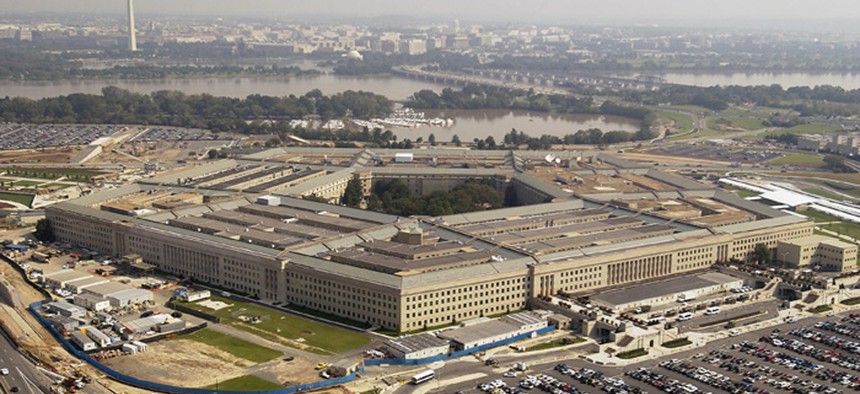
Defense Department file photo
A Breakthrough in Federal Labor-Management Relations at the Pentagon?
From one union's perspective, the Defense Department is working with labor groups better than ever on personnel reform.
The latest overhaul of the Defense Department civilian personnel system has been an “unprecedented" landmark in labor-management collaboration, according to one union involved in the negotiations.
Pete Randazzo and Paul O’Connor, who represent the National Federation of Federal Employees, celebrated the process of replacing the failed National Security Personnel System created during the George W. Bush administration. The union officials corroborated the Pentagon’s side of the story, which another union previously called a complete fabrication.
“For the most part it has been collaborative, inclusive and genuine with open communication,” Randazzo told Government Executive.
Defense has boasted its engagement with employees, labor groups and other stakeholders in determining how to best reform the way it evaluates and compensates its civilian employees. In an interview with Government Executive last month, an American Federation of Government Employees official took issue with those claims, saying his union was largely boxed out of the process.
NFFE, however, said design teams made up of labor and management representatives arrived at recommendations for the Pentagon after a “highly interactive” process. That process, which was completed in December 2011, yielded 99 suggestions, 88 of which the Pentagon ultimately adopted.
As the process has moved toward implementing those recommendations, there have been some communication gaps, Randazzo said. Still, the partnership enabled the Pentagon to hear “perspectives they never would have heard before,” he said.
“We’re still working together,” O’Connor said. “There’s such diversity of ideas. It’s really interesting to hear other folks’ perspectives.”
The pair hoped the spirit of collaboration between supervisors and rank-and-file employees would be adopted into the new system.
Department managers “were villains at first,” Randazzo said. “Really they were more of the victim. We weren’t equipping them to be successful.”
To that end, a Pentagon spokesman said the new system will better connect performance expectations to departmentwide goals, and boost communication between employees and the supervisors rating them. When Congress repealed NSPS in 2010, it explicitly said the replacement system -- which does not yet have an implementation date -- should reward the best employees with not just monetary bonuses but access to more training and development opportunities.
The new personnel management structure will establish a three-tier performance appraisal system for the vast majority of the Defense Department’s 750,000 civilian employees.
Regardless of the final configuration of the system, Randazzo said he hoped the redesign process will be used as a prototype in the future.
“It will probably be used in the Harvard business model,” he said. “It was that unprecedented.”







